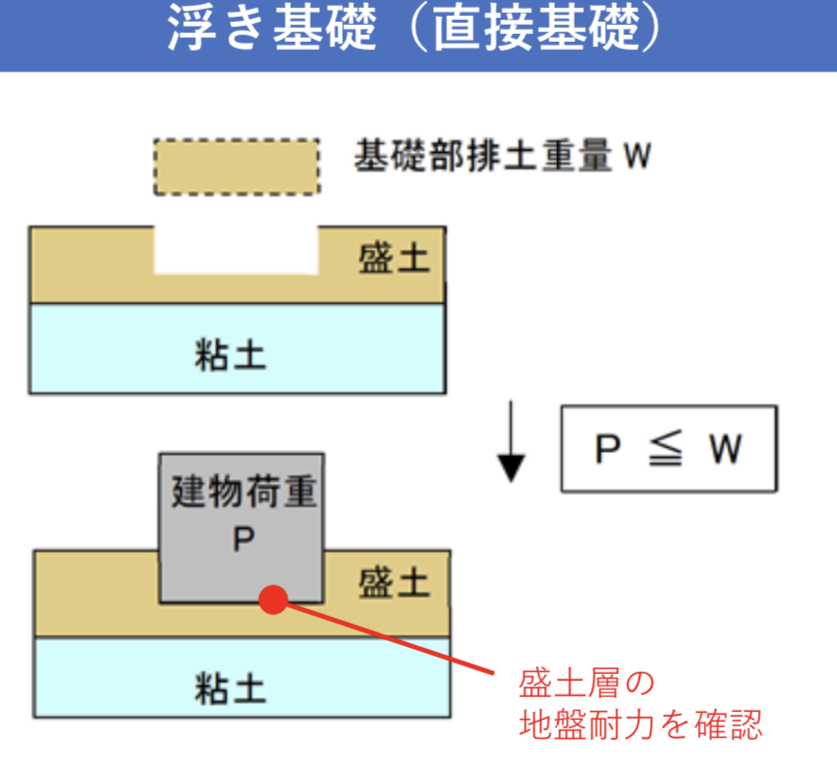
I decided to explore the ‘floating foundations’ in greater detail. The photo attached below provides an excerpt from the official Expo Pavilion Construction Guidelines, which state:
1. Excavate the part of the ground that will serve as the foundation for the building. Let’s call the weight of the excavated soil ‘W.’
2. Install the Pavilion in the excavated cavity. The weight of the Pavilion is denoted as ‘P.’
3. Make sure that ‘P’ weighs less than ‘W,’ implying that if you construct a building lighter than the soil you’ve removed, it won’t sink.
However, adhering to these guidelines may result in ground subsidence. The reason is straightforward: there is no ‘buoyancy’ at play. Reports indicate that the Yumeshima area features a 3-meter mound of soil atop a soft clay layer. For buoyancy to function effectively—much like how a ship stays afloat—the object must reach a depth where buoyancy comes into effect.
Interestingly, the Expo guidelines explicitly mention: ‘Do not dig deeper than 2.5 meters.’ This means the Pavilion won’t extend into the clay layer that would allow for buoyancy.
In conclusion, the Pavilion is destined to sink if built according to these guidelines. The assumption that ‘if P is less than W, the ground won’t sink’ is fundamentally flawed.
#Expo2025 #ConstructionChallenges #FloatingFoundations #PavilionConstruction #GroundSubsidence #EngineeringDilemmas
